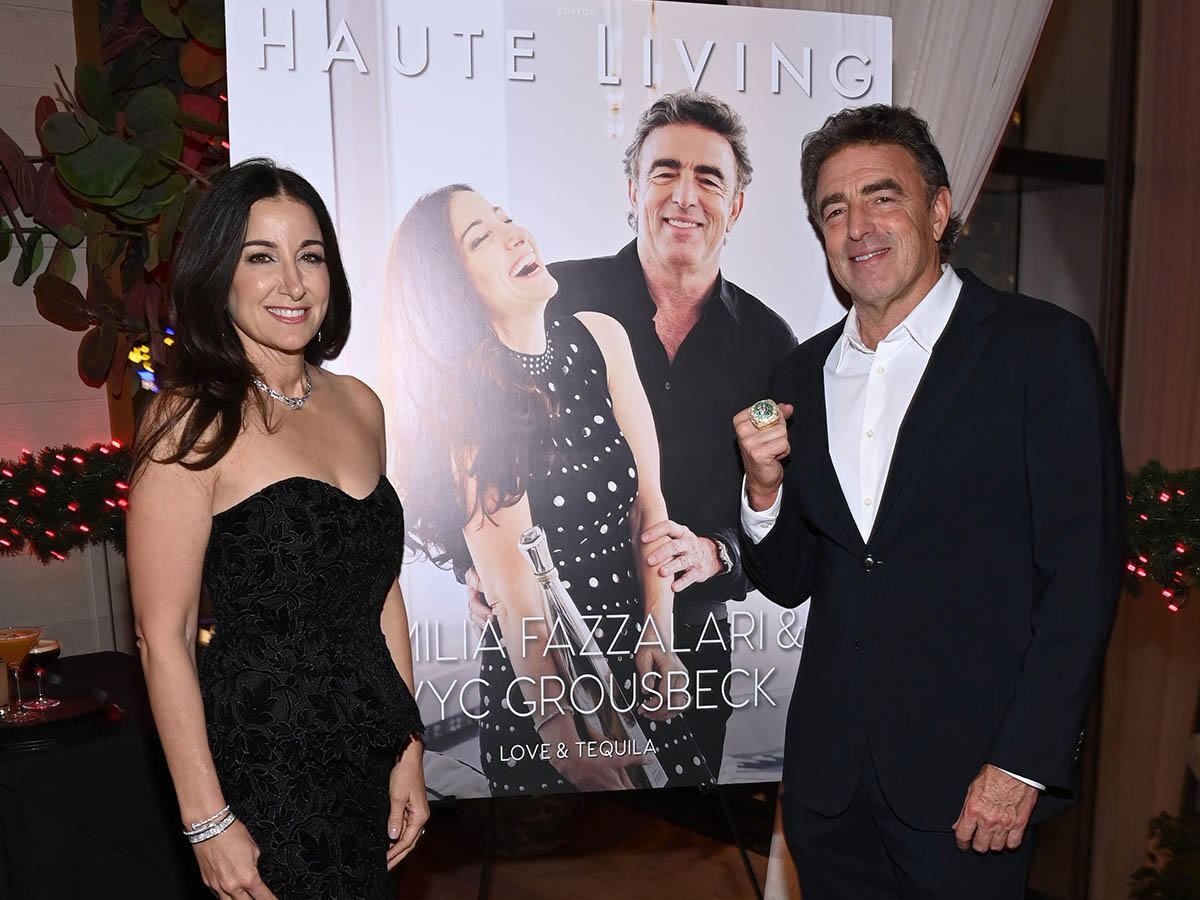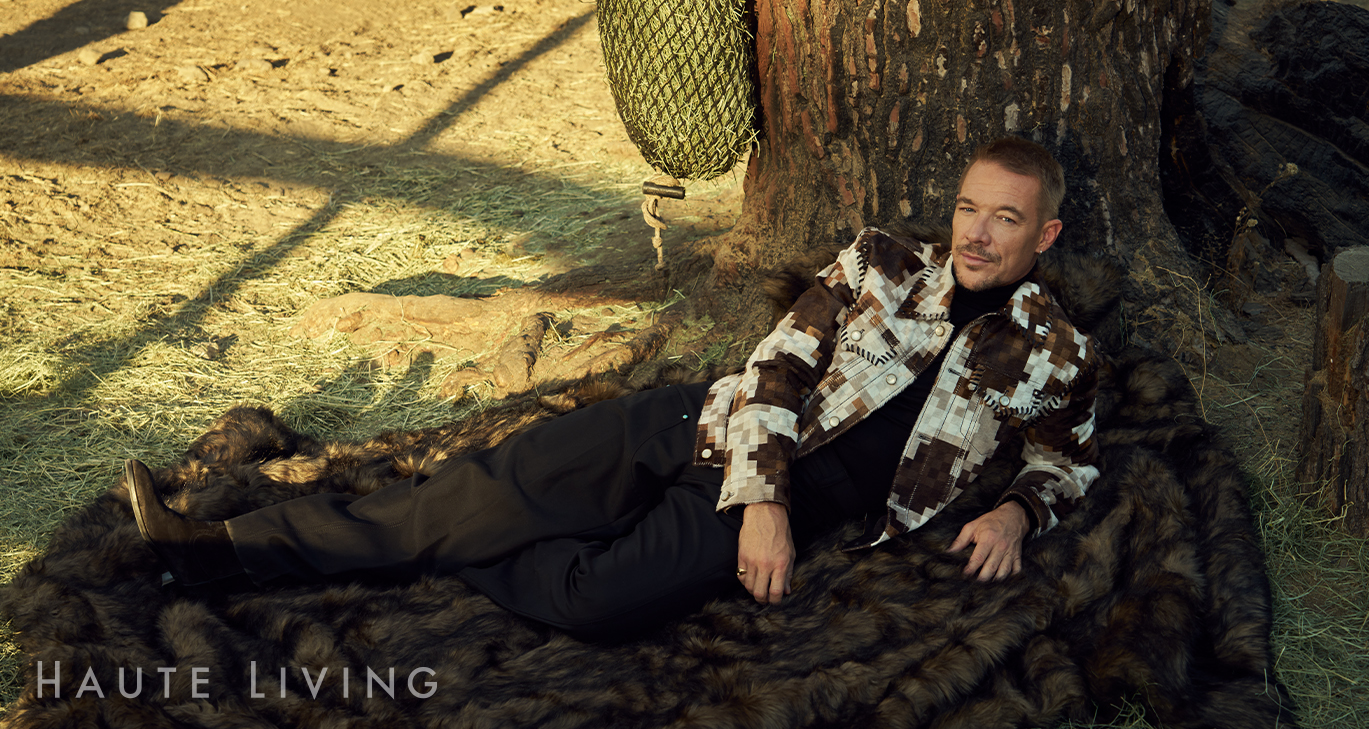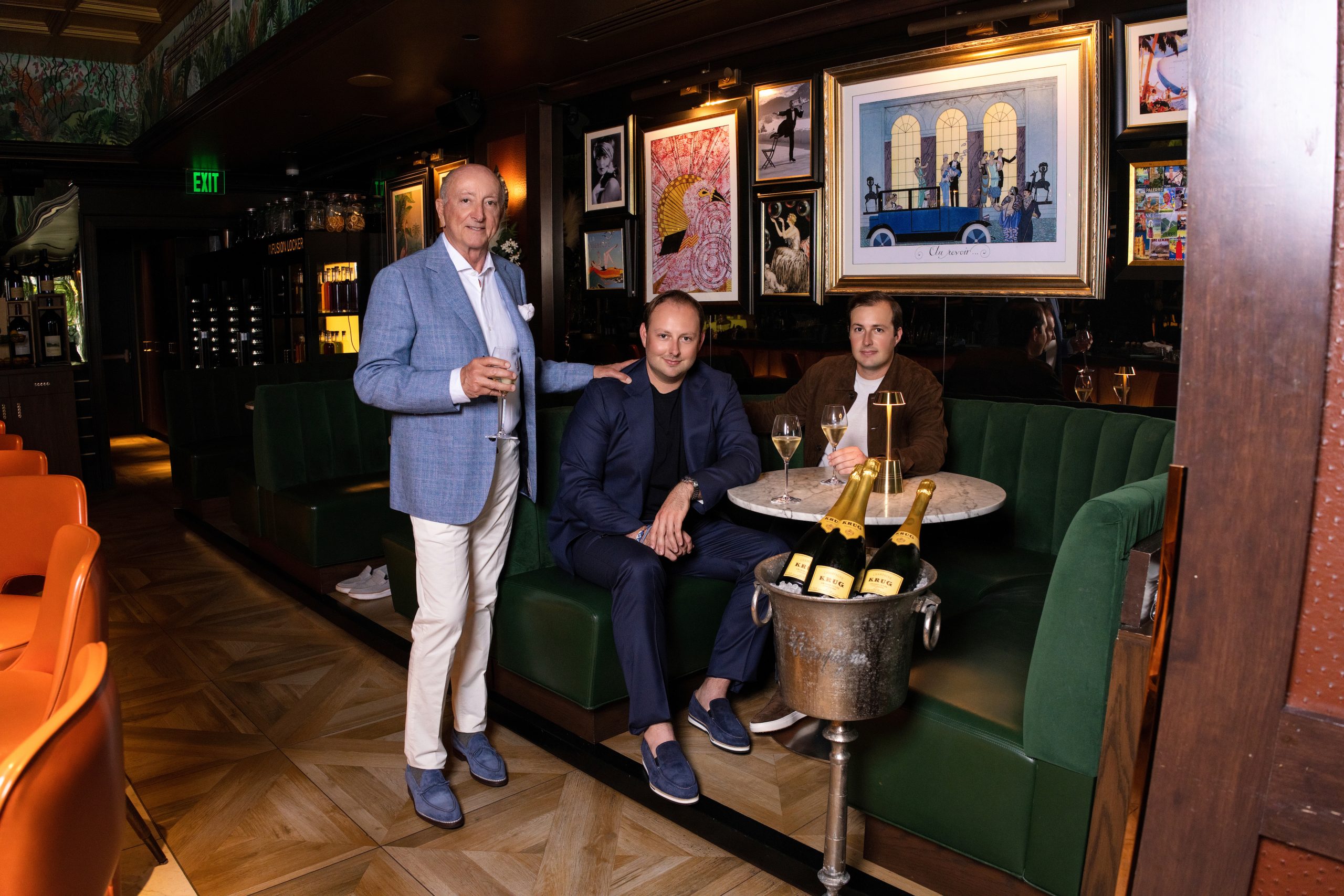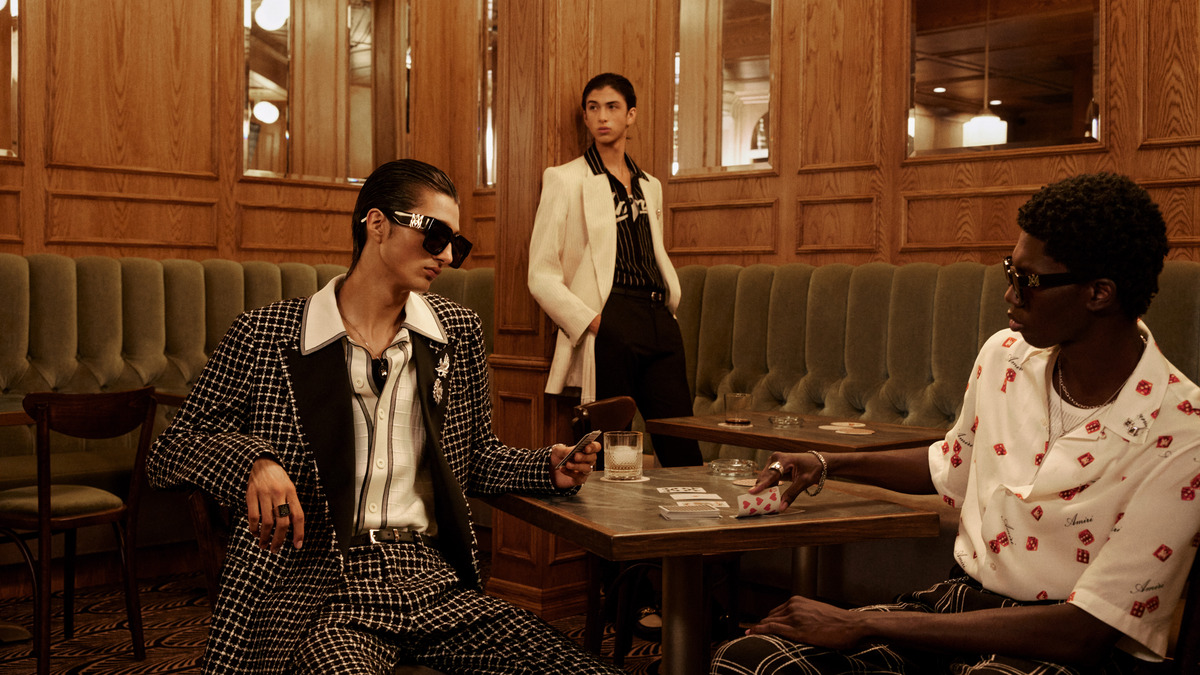Tony Goldman is Soho Cool
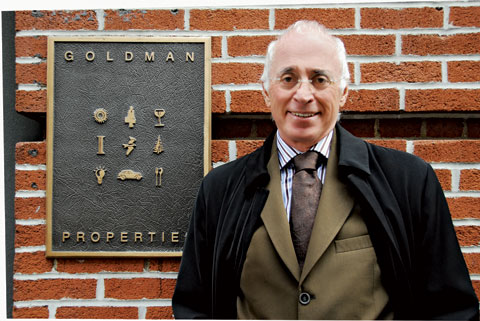
To tell this whole tale would take up every page in a rather long book, a book that would surely enrapture everyone who cracked open its cover. This article, while attempting to shed some light on the topic at hand, will not even begin to scrape the surface of the intricate, intriguing, and inspiring life of its subject. That subject? Tony Goldman, founder and owner of Goldman Properties, a man known as an urbanist, a community developer, and an entrepreneur. Beyond that, Tony Goldman has been commonly referred to as one of the igniters of New York’s Soho and Miami’s South Beach. He is an innovator, a man who thinks outside the box, and as a result, he has redefined the way people live in communities around the country.
Goldman, born and raised in New York City and educated at Emerson College in Boston, got into real estate when he was in his early 20s, renovating brownstones on the Upper West Side.
He became frustrated with the living spaces in New York City. “The small boxes that people lived in and the offices that people worked in were claustrophobic,” he explains. He set out on a quest to discover a way to realize openness and space in urban communities, finding himself walking the dirty, gritty streets of Soho in the late 1970s, and realizing that this neighborhood contained every wonder he was looking for.
“Soho was very clear to me as the perfect neighborhood. It is the largest cast-iron district in the world,” Goldman recalls. “It had the perfect scale that pedestrians would feel most comfortable living in-which is the five-story street wall-and a beautiful flow of harmonious architecture. Because of that unique style, it offered an atmosphere to the neighborhood that was really second to none, anywhere in New York. It was clear to me the quintessential neighborhood in which to live and work in a pedestrian and historic-based neighborhood in New York.” So he dove right in, despite the fact that, at the time, Soho was laden with artists, factories, performance spaces, and other avant-garde facilities, but few living spaces, with an air of precariousness. Goldman saw through that and envisioned the future of this New York neighborhood, one that was based in the non-constricting loft-style of living. He was able to entice some offshore investors, and built a significant portfolio of properties in Soho, buying for what he calls “scrap metal prices.” It was in Soho that the philosophy that still reigns true for Goldman Properties was born and fully realized: build pedestrian-based neighborhoods that thrive with street life, energy, and provide a real sense of place. “That’s when we bought critical mass of real estate in one area, early on, and as much as we could afford to,” he explains.
In order to fully realize this philosophy, Goldman decided that he wanted to open a restaurant that would draw people to the area. On December 1, 1979, he opened the doors to Greene Street Café, the first of New York City’s great jazz supper clubs since the 1950s. In addition, he opened up Soho Kitchen and Bar. “It was the definitive Soho meeting place,” he explains. “We served 100 wines by the glass, which in 1984 was innovative for the industry.” Everything about Goldman is innovative. The places flourished, and Soho came alive. Shops, galleries, eateries, and pubs filled in the storefronts, all combining to create a special, unique, individual manifestation of Goldman’s original vision for the ideal New York neighborhood.
[highlight_text] And just like the Green Street Café and The Soho Kitchen and Bar in Soho, Goldman opened and operated Lucky’s at the Park Central, which became the hottest restaurant in town. [/highlight_text]
After Soho was up and running, Goldman began looking for new investment opportunities and found inspiration on Miami Beach. He came to Miami in 1983, first investing in Coconut Grove, but sold out quickly after the area took a turn in an unfavorable direction. One weekend, he headed to what is now known as South Beach to check out an investment opportunity for a friend. He came down Fifth Street, turned the corner to Ocean Drive, and history was made. He explains, “I came around the corner and saw Ocean Drive and my heart started to race and my hands got sweaty, and I just realized I hit a place where something was going on. I need to have a physical reaction to something magnificent. … The minute I saw it, I knew I had discovered the American Riviera.”
Today, Goldman’s South Beach office is on Ocean Drive, perched above his property which houses News Café, a bustling hive of activity nearly 24 hours a day. The locale is appropriate: News Café was one of the first restaurants to open on Ocean Drive, a street that, before Goldman, was a polar-opposite neighborhood of what it is today. The café’s diners fill the many tables that stretch from the building to the street, lining the sidewalk that before Goldman got involved was a mere five feet wide. Today, they stretch for 13 feet, providing ample space for the tourists and locals who flock to the area every day of the year (although the walkways still manage to get crowded with the constant influx of South Beach revelers).
Just twenty-some years ago, Miami Beach was a different scene entirely. In fact, what is now known as the American Riviera was often referred to as “God’s Waiting Room.” Ocean Drive, as opposed to being a hub of chicness, was lined with the elderly who sat on their rockers and watched an occasional car cruise by. Likely, that car was filled with the drug dealers and degenerates who comprised the remaining population of the area. Miami Beach was a place to avoid.
But Goldman didn’t see it that way, and, as evidenced by his success in Soho, he has a knack for recognizing golden opportunities. Within a year, Goldman owned 18 properties in Miami Beach, including the famed Park Central Hotel, a centerpiece of Ocean Drive. But when Goldman bought it, there wasn’t even such a thing as the Art Deco District. Goldman was integral in creating the designation of the historic district for South Beach and played a major role in the South Beach renaissance. The New York Times even dubbed Goldman as “the father of South Beach, who time and again is credited with recognizing the potential in the crumbling pastel treasures on Ocean Drive and Collins Avenue.”
And just like the Green Street Café and The Soho Kitchen and Bar in Soho, Goldman opened and operated Lucky’s at the Park Central, which became the hottest restaurant in town. The bankers who were redlining the loans on the buildings on Ocean Drive were lined up down the block waiting to get into the bustling hotspot.
And the fashion industry followed, discovering that South Beach’s golden sunshine proved ideal for shoots, whether they be for movies or magazines. “I compare the beauty world to the Art Deco world,” Goldman explains. “The Art Deco buildings are highly feminine and elegant.” And as such, Goldman commissioned Leonard Horowitz, a former interior designer, who went to work on painting the Art Deco buildings that fill the beach in the pastel colors they are known for today, using a new palate to highlight the buildings’ unique features. Goldman is one of the reasons South Beach got its colorful face that defines the city for the rest of the world thanks to the iconic images of the neon-lit district.
The city officials in Miami took note, thanking Goldman for his efforts in transforming South Beach by awarding him the position of chairman of the board at the Greater Miami Convention & Visitors Bureau. Thanks to his direction, Art Basel turned its spotlight on Miami Beach, solidifying the city’s rightful place as a global haute spot. There is no doubt that Goldman’s vision for the American Riviera has been realized.
In 1998, Goldman opened The Hotel, the quintessential Art Deco gem on 8th and Collins. Formerly known as The Tiffany (and still known as The Tiffany to Goldman, despite a lawsuit from the jewelry company), The Hotel was designed by Todd Oldham, who used a beautiful palate of bright colors that constantly remind the guests that this property is quintessentially South Beach, and unlike any other hotel. “Oldham had never done a hotel before,” Goldman explains, “but part of our program is to take the risk. We loved Todd’s color sense, and his freewheeling and confident approach to putting very different things together to form one.” The Hotel is actually headed up by Goldman’s daughter, Jessica Goldman-Srebnick, who is principal of Goldman Properties and COO for the hospitality division. She came on board with the company in 1998, and has helped ensure the hotels stay at the top of their industries. And she is doing an amazing job: Since its opening, The Hotel has hit Condé Nast Traveler’s “Hot List” and “Gold List,” and has received the prestigious AAA Four Diamond Award for six years running. The Hotel’s restaurant, Wish, was listed as one of Esquire’s Best New Restaurants in 1999.
Goldman spent almost 20 years ensuring the success of South Beach, and is still actively involved in the city today. But as he explains, “Goldman Properties looks to find a new zone every five to seven years. That’s how we do it, we’re patient with how we develop and when we develop, and it’s somehow different than the institutional models of development.”
In 1992, Goldman and his son Joey, chief technology officer at Goldman Properties and CEO of Goldman Real Estate, saw a great opportunity in New York’s Wall Street area, where he bought “10 to 12 buildings in the strictly financial district, even though it was difficult times and Wall Street was suffering,” Goldman recalls. “I bought with a vision to transform the area into a pedestrian-based center to what I called the Village of Wall Street. My concept was to make it the last great neighborhood in New York City. It was the only place that was never a residential neighborhood but that could be.” Twenty-seven percent of the real estate was vacant, and Goldman went to work crafting a new neighborhood where people could live in the same neighborhood in which they worked. Once again, in order to guarantee success, Tony and Joey Goldman, along with Joey’s wife, Thea, opened a restaurant to draw people to the neighborhood, naming this one the Wall Street Kitchen and Bar after the Soho counterpart. “We were christened the loudest bar in Manhattan,” Goldman laughs.
After Wall Street, Goldman was enticed to Philadelphia. “All of the ingredients were right for us, and I started to buy in 1999,” he explains. Goldman focused on an area from 12th and 13th Streets from Chestnut to Walnut. “We bought most of the property within that sector. It was kind of a red-light district” that has since been turned around. “We wound up overbuying,” he says, “and got carried away with our vision.” The district is still growing and developing, but Goldman says that’s all part of the plan. “That’s very much a part of what we do: We sustain a long-term growth and development.”
He was then enticed to Boston by Goldman Sachs, who had bought the last 17 buildings of the Boston wharf portfolio. He was engaged to develop a mixed-use vision for the future of the district, and execute the plan with Sachs. The project is in development in the Fort Point Chanel district of downtown Boston.
In addition, the Goldmans have their hands full developing Wynwood Arts District in Miami, a project that is being headed up by the next generation of Goldmans: Tony’s son, Joey, a visionary in his own right. He knows a thing or two about the revitalization of districts, thanks in part to his childhood spent above the Greene Street Café and The Soho Kitchen and Bar… where the Goldmans lived in a loft, of course. “I’ve been working alongside my father for many years, and I understand what’s involved in creating a district. And knowing what’s involved I still choose to go forward with it!” he laughs. “To be able to go through the evolution of an area is incredible. The experience is priceless,” he explains. “And as a result, I know the ingredients necessary to make it happen.” What it begins with is patience: The growth is not going to happen overnight.
Joey and his father Tony began investing in Wynwood on a grand scale in 2003, and have acquired more than 20 commercial properties between 22nd and 28th Streets. The goal is to transform the area into the next Soho, a place where people can live, work, and play, all in a contained neighborhood. Joey has great enthusiasm for the project because he has a never give up attitude. He believes that the area is going to be a huge success over time, and as such plans on opening four restaurants in the area within the next year with his wife, Thea. In addition, Wynwood is home to MOCA at Goldman Warehouse, a 12,000-square-foot gallery that houses the Museum of Contemporary Art’s annex. This museum space was donated to MOCA by the Goldman family. Thanks to the extensive work in the creation of this new art district, Joey has been appointed as a chairman for Miami’s Art’s and Entertainment Council.
Goldman, who currently resides in Soho with his wife Janet (owner of the lauded Fragments Jewelry Company, with stores in Soho and on Madison Avenue, and available at www.fragments.com), keeps himself busy overseeing a multitude of projects including 25 Bond, an innovative building in yet another budding neighborhood of New York. He is happy to let Joey handle things in Wynwood for now. Goldman is so appreciative of the experiences he garners by working alongside his children. “It’s wonderful for me to be partners with my kids. What it does for us is it takes our company beyond my vision to a new, shared vision. And though it’s exciting for me, it is challenging. We need to communicate, and we’re committed to the long-term ride. We communicate well, and there’s nothing better than enjoying our successes together.” The visions of this family of innovators combining to form one master plan for success, there is no doubt we can expect Goldman Properties to continue to transform neighborhoods for generations to come.

